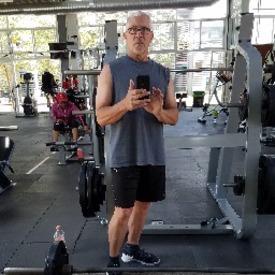heart rate and burning fat

akplanegirl
Posts: 15 Member
Hi all,
Not sure if someone posted this question or not so sorry for the repeat if so....
I wear a heart rate monitor (Polar brand) and love it because I enter my weight, height, age, and it tells me my heart rate and other stats.
My question stems from using it and weight loss/fat burn (certainly have trouble areas). When I get anywhere above the 137 rate (or around there) it shows that I am in the "fitness" mode. If I am lower than that, it shows I am in the "fat burn" mode. I have heard that the higher your heart rate that is what burns the fat (per Jillian Michael's and others). If so, then why the lower heart rate range and call it "fat burn"?
Do I want to continuously have a higher heart rate when working out to burn the fat and tone the muscles, or do I want to stay in the lower range? However, it is very difficult to stay around 137 when I am running, plyo's, etc. Is it simply calories in, calories out at that point?
Goodness! Those questions should at least give your brain a workout today! Thanks!
Not sure if someone posted this question or not so sorry for the repeat if so....
I wear a heart rate monitor (Polar brand) and love it because I enter my weight, height, age, and it tells me my heart rate and other stats.
My question stems from using it and weight loss/fat burn (certainly have trouble areas). When I get anywhere above the 137 rate (or around there) it shows that I am in the "fitness" mode. If I am lower than that, it shows I am in the "fat burn" mode. I have heard that the higher your heart rate that is what burns the fat (per Jillian Michael's and others). If so, then why the lower heart rate range and call it "fat burn"?
Do I want to continuously have a higher heart rate when working out to burn the fat and tone the muscles, or do I want to stay in the lower range? However, it is very difficult to stay around 137 when I am running, plyo's, etc. Is it simply calories in, calories out at that point?
Goodness! Those questions should at least give your brain a workout today! Thanks!
0
Replies
-
bump0
-
just read this on her site today....people asked she didn't answer. would love to know as well?!?!?0
-
When you are below 75% of max heart rate, you are using mostly fat as fuel. That is what your HRM is telling you. When you get over that, you are using a mix of glycogen (blood sugar stores) and fat and it shifts more to glycogen the higher your heart rate. The difference is that the more intense your exercise, the more Excess Post-exercise Energy Consumption or EPOC you have. EPOC continues to burn calories, preferentialy fat, for hours after your are done with your workout. Low impact workouts (below 75% HR) has no EPOC. What you burn is what you burn. So a rough example looks like: Walking for 1.5 hours 600 calories, Running for 45 minutes 600 calories plus EPOC, HIIT for 20 minutes 400 calories plus EPOC, Strength Training for 45 minutes 300 calories plus EPOC.
Bottom line, you are correct. Work out at higher intensity and burn more calories, both per minute and overall. Hope this helps!0 -
what burns fat is eating less calories than your body uses in a day. So caring about 'fat burning mode' and such for an hour of exercise is silly when the other 23 hours in a day are what really matters as its like 500% more calories burned. exercise is a SMALL part of fat loss. diet is key. Monitor that.0
-
you burn a greater percentage of fat at a lower heart rate but less calories. you burn more calories at an higher heart rate but a smaller percentage.
so what's better, getting 40% of 250 calories or 20% of 800 calories? those are the numbers i usually get on my HRM when i do 45 minutes worth of "fat burning zone" workout and when i do intervals0 -
Thanks all! That is all helpful information! I just want to lose some weight and get stronger before I get pregnant (hopefully in the next couple months).
 0
0 -
just read this on her site today....people asked she didn't answer. would love to know as well?!?!?
Did you mean "her" as in me? I didn't see a question that people asked if that was the case...sorry.0 -
no you mentioned jillian michael's....she posted the same thing where to have your heart rate and it confused people. i thought you may have read the same article?!?!? sorry for the confusion but glad someone answered:0)just read this on her site today....people asked she didn't answer. would love to know as well?!?!?
Did you mean "her" as in me? I didn't see a question that people asked if that was the case...sorry.0 -
bump0
-
Thanks for the question and answers.... I was wondering the same thing.0
-
I wear a heart rate monitor (Polar brand) and love it because I enter my weight, height, age, and it tells me my heart rate and other stats.
My question stems from using it and weight loss/fat burn (certainly have trouble areas). When I get anywhere above the 137 rate (or around there) it shows that I am in the "fitness" mode. If I am lower than that, it shows I am in the "fat burn" mode. I have heard that the higher your heart rate that is what burns the fat (per Jillian Michael's and others). If so, then why the lower heart rate range and call it "fat burn"?
Do I want to continuously have a higher heart rate when working out to burn the fat and tone the muscles, or do I want to stay in the lower range? However, it is very difficult to stay around 137 when I am running, plyo's, etc. Is it simply calories in, calories out at that point?
That line is drawn partly from your calculated maxHR (220-age) which may have little to do with reality, and where your workouts seem to go.
There is a fat-burning zone, better called Active Recovery zone, where you are about as aerobic as you are going to get while actually exercising more than a walk, so up to probably 45% fat burn. This zone adds very little stress to your system, but is great for blood flow into your muscles and getting some cardio benefits.
If you are desiring to workout every day or lift heavy, this is the best zone for the day after a hard effort - when your body really needs to recover to become stronger.
But, if you say only had 3 days a week of 60 min, or 5 days of 30 min, and only doing cardio, you'll burn just as many fat grams or more at higher intensity.
More bang for the buck you might say. If you have hours of time available and want to train for endurance, than Aerobic zone above Active Recovery could be used.
I've found the Polar line ends up about midway in the Aerobic zone for me.
Now, if you want a good workout, after 5 min warmup in lower Fat-burning zone, kick it up a notch for a minute as high as you can go, then bring it back down into that lower zone for a few minutes. Do that for the entire time.
You can also skip their defined line and know your own zones, sadly their cheaper watches don't allow setting up zones easily, but you can still do it.
Use the spreadsheet, the HRM tab, near the bottom. The section right above setting up zones talks about finding your maxHR, which has big bearing on calorie burn, and setting up zones.
https://docs.google.com/spreadsheet/ccc?key=0Amt7QBR9-c6MdGVTbGswLUUzUHNVVUlNSW9wZWloeUE0 -
Thanks for the response! That is helpful. I feel I do go from lower to upper rates when doing certain exercise videos, especially as they transition from one type to the next like p90x, so hopefully that is the same thing. Just trying to get this workout/diet down so I can see the results which I have to tell myself, does not happen overnight!0
This discussion has been closed.
Categories
- All Categories
- 1.4M Health, Wellness and Goals
- 394.2K Introduce Yourself
- 43.9K Getting Started
- 260.4K Health and Weight Loss
- 176.1K Food and Nutrition
- 47.5K Recipes
- 232.6K Fitness and Exercise
- 438 Sleep, Mindfulness and Overall Wellness
- 6.5K Goal: Maintaining Weight
- 8.6K Goal: Gaining Weight and Body Building
- 153.1K Motivation and Support
- 8.1K Challenges
- 1.3K Debate Club
- 96.4K Chit-Chat
- 2.5K Fun and Games
- 3.9K MyFitnessPal Information
- 15 News and Announcements
- 1.2K Feature Suggestions and Ideas
- 2.7K MyFitnessPal Tech Support Questions






